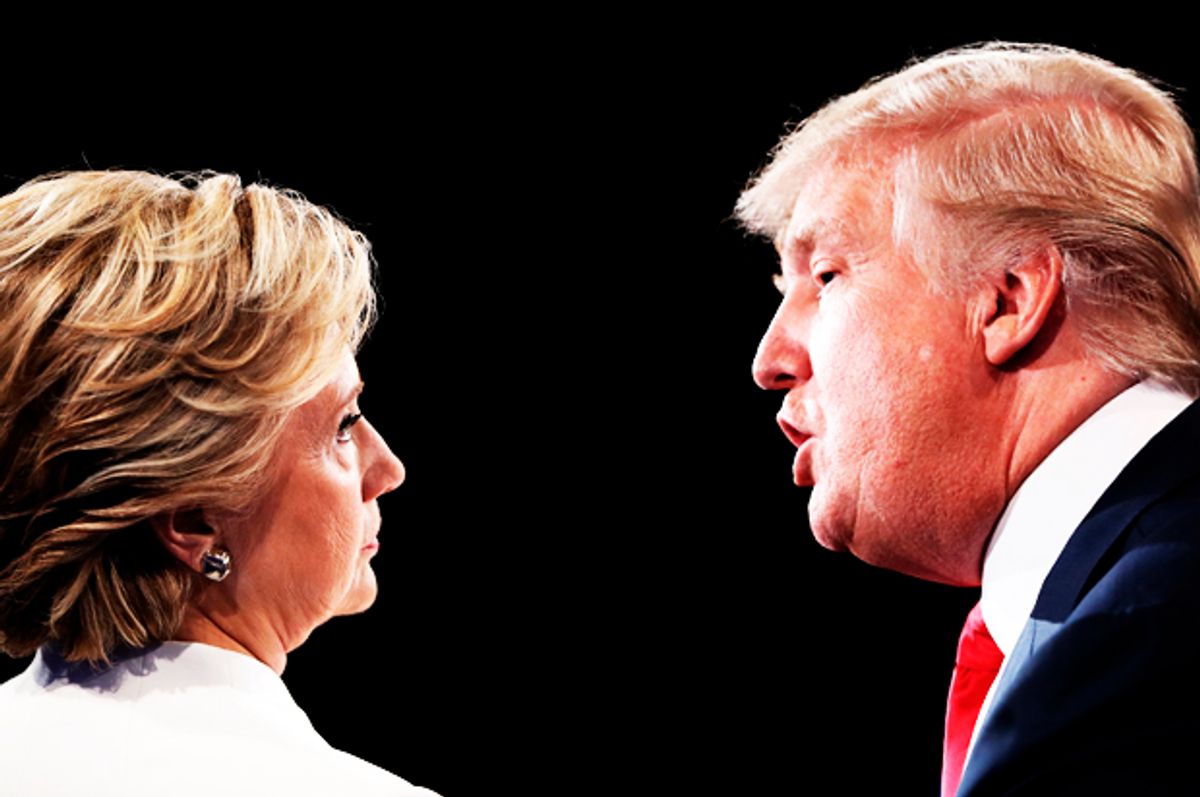Is purple America really disappearing? A recent analysis of how America’s 3,113 counties voted in 2016 suggest it may be, revealing deepening electoral majorities of people with similar political beliefs than past presidential elections.
This polarization seems to confirm the anecdotal experiences of many people, who report they are increasingly living among like-minded neighbors. Indeed, in the months since the November election, political viewpoints appear only to have solidified, further erasing the prospect of a "purple" middle ground between a "blue" left and a "red" right.
When FiveThirtyEight’s David Wasserman compared county voting patterns from 2016 to past elections, he concluded that purple America has all but disappeared.
“More than 61 percent of voters cast ballots in counties that gave either Clinton or Trump at least 60 percent of the major-party vote last November,” he wrote for the data-centric political and sports hub. “That’s up from 50 percent of voters who lived in such counties in 2012 and 39 percent in 1992 — an accelerating trend that confirms that America’s political fabric, geographically, is tearing apart.”
While Wasserman said we cannot equate Los Angeles County, California (population 10 million, 76 percent for Hillary Clinton), to Loving County, Texas (population 112, 94 percent for Trump), he said it was clear that the nation has evolved into "single-party geographic enclaves, especially 'at the extremes.'"
“Legions of big counties were won in a landslide (by at least 20 points),” he wrote, giving examples. “The counties containing Ocala, Florida; St. Cloud, Minnesota; Utica, New York; Wilkes-Barre, Pennsylvania; and Charleston, West Virginia, were Republican routs for the first time in a generation. Meanwhile, San Diego County, California; Montgomery County, Pennsylvania; and Henrico County, Virginia — all GOP landslide counties in 1988 — became Democratic landslide counties in 2016. Those examples prove that communities can change allegiances over time. But most places just aren’t budging — in fact, they’re doubling down.”
Other data crunchers don’t quite think purple America has vanished, but rather that it migrated to the outskirts of urban areas. That trend is blurred by looking at election results based on county-line borders. Statisticians discussing FiveThirtyEight’s report in online forums said mapping political views by population grids is a better metric than by county vote totals.
Breaking down voting patterns by population density confirms that political views are becoming more geographically concentrated. But it also shows a lot of blue, purple and red out there in 2016 — far more than just looking at a county-level analysis.
“If the map were drawn instead as a grid of squares of equal population you’d see slightly more blue than red with both hues getting deeper over time,” wrote AKADriver on Reddit’s DataIsBeautiful page and thread discussing Wasserman’s report.
Another Reddit writer pointed to a precise map, below, created by University of Michigan physicist Mark Newman and posted online along with other 2016 analyses. It shows plenty of deep purple stretches, along with deep red and blue epicenters:
In other words, what appears to be happening is the nation is divided into deep partisan pockets, paler shades of blue or red, and purple areas in between. If anything, it remains to be seen if those pale or purple pockets will take sides as the Trump White House and congressional GOP impose an agenda that harms them.
On the blue side of the political spectrum, it’s clear that since the election, Trump opponents are uniting and deepening their resolve. There's more evidence for this than just the crowds at the Women’s March on Washington after the inauguration and protests coast-to-coast at airports supporting Muslims and immigrants.
Last Sunday’s New York Times Magazine featured a lengthy article by Charles Homans, “The Party of No: How a President and Protest Movement Transformed the Democrats.” It mentioned how a Google Doc written in December by ex-congressional staffers went viral because it offered what millions of Trump opponents wanted: A blueprint for resistance and how-to instructions to confront members of Congress and persuade them into opposing Trump. The fact that this plan, which was viewed more than 5 million times in its first month, was based on what right-wing obstructionist Tea Partiers did after the 2012 election, was irrelevant. (It has since become a website.)
“This is not a panacea, and it is not intended to stand alone,” its authors wrote, encouraging further activism. “The Tea Party took root in 2009, focused on fighting against every proposal coming out of the new Democratic administration and Congress. This focus on defense rather than policy development allowed the movement to avoid fracturing. Tea Party members may not have agreed on the policy reforms, but they could agree that Obama, Democrats, and moderate Republicans had to be stopped.”
The most eye-opening element in their advice might be the observation that very small numbers of Tea Partiers — a dozen people speaking out at congressional town hall meetings — not only frightened Congress into responding to their demands, but pushed their neighbors to adopt their agenda. That helped states turn redder in recent years, which in turn, fed into the GOP’s 2016 sweep.
If purple America has all but disappeared, as FiveThirtyEight posits, it means there’s less of a chance that opposition to draconian policies by Trump and the GOP will result in their eventual ouster from office. But if purple America is concentrated in the more populated stretches surrounding cities and regional hubs, it suggests that swaths of more independent voters could join a growing wave of opposition to Trump and this Congress.
Or, perhaps optimistically, deep-red counties could start changing color as neighbors see they aren’t alone in facing GOP-created newfound hardships.



Shares